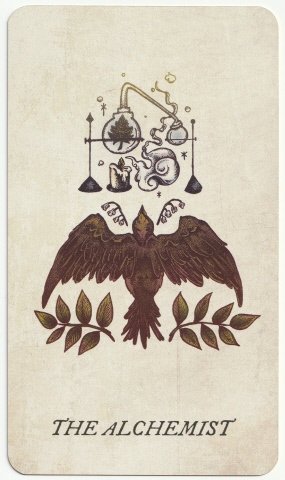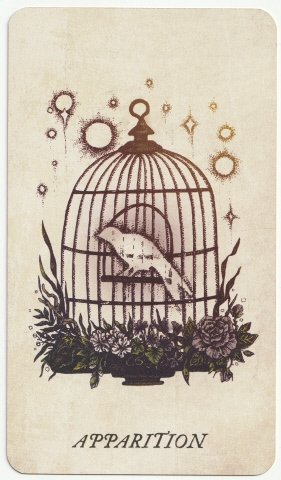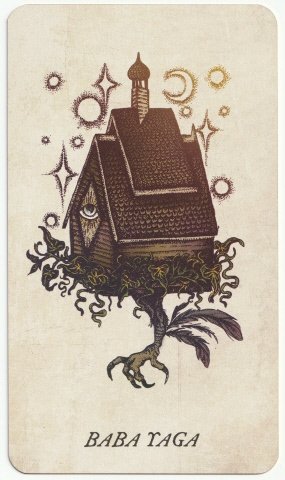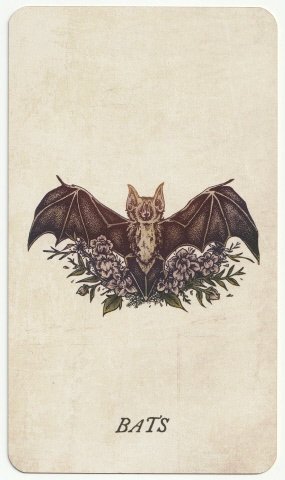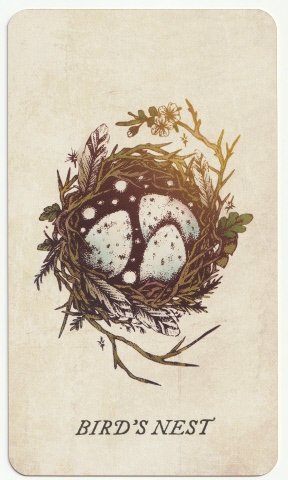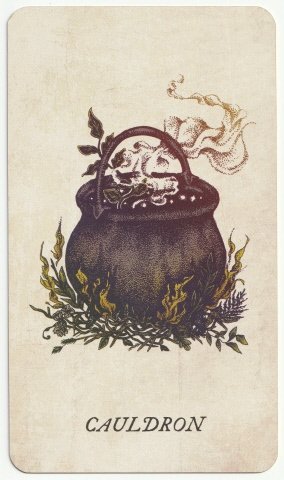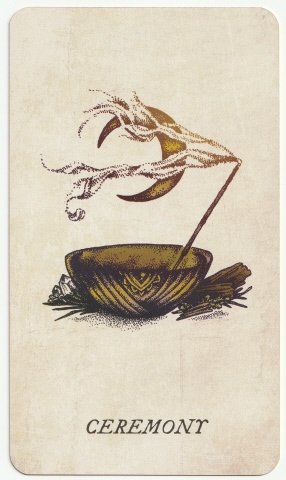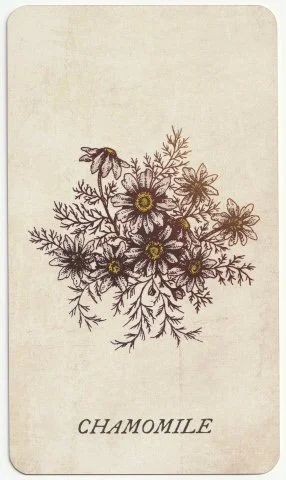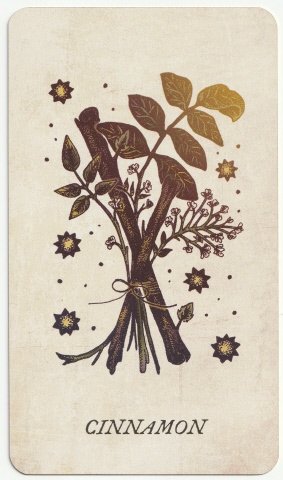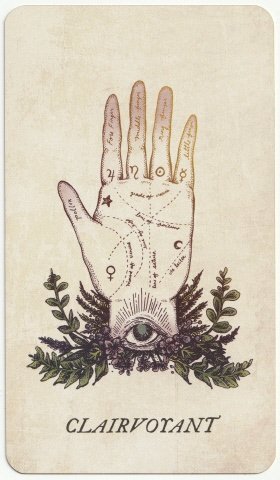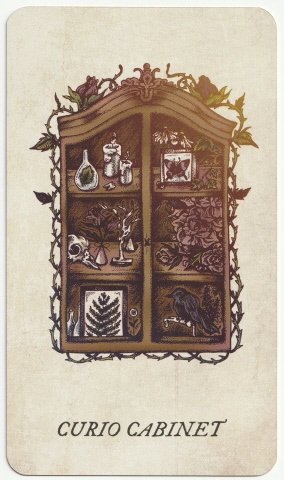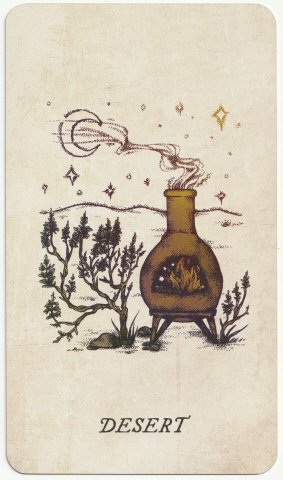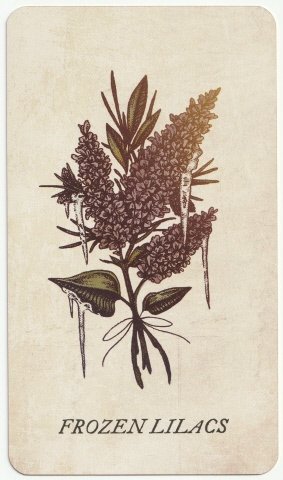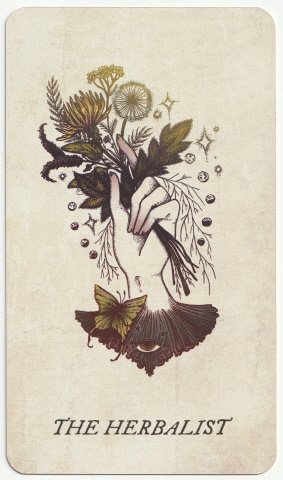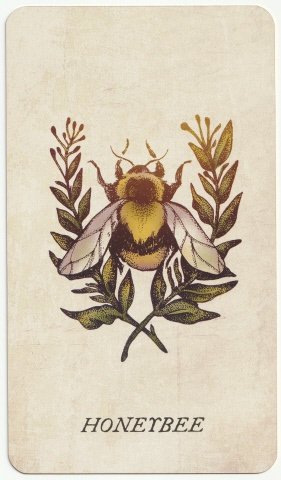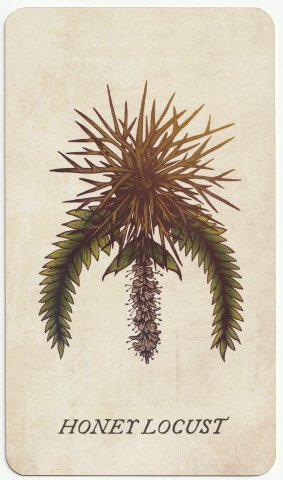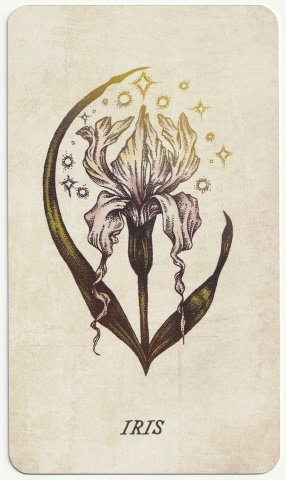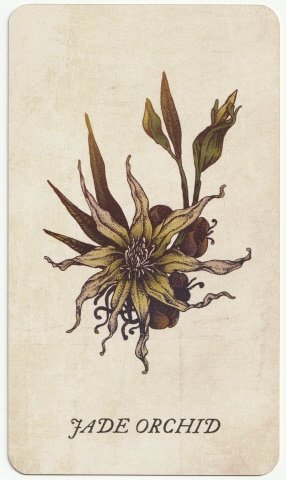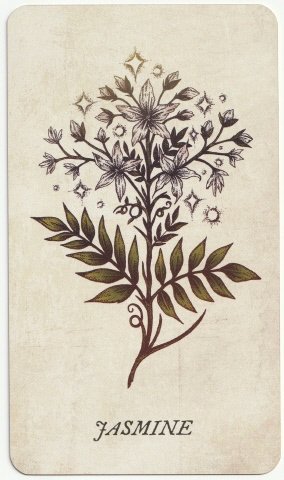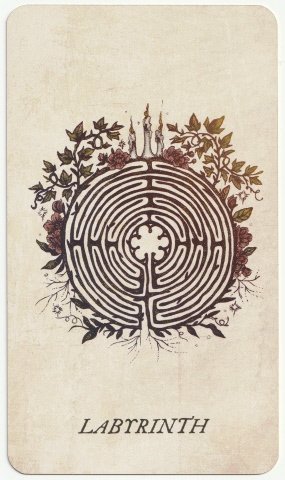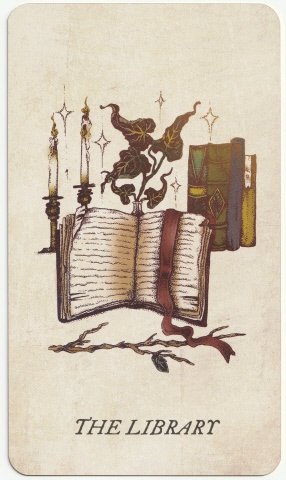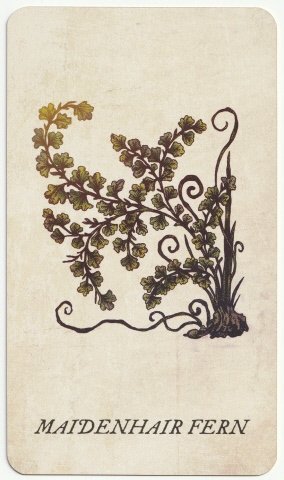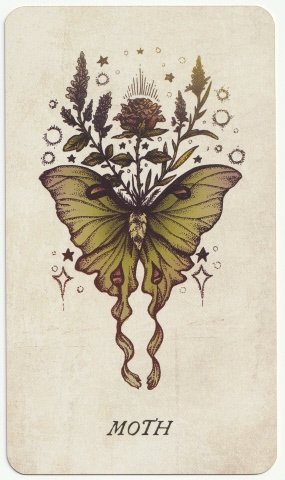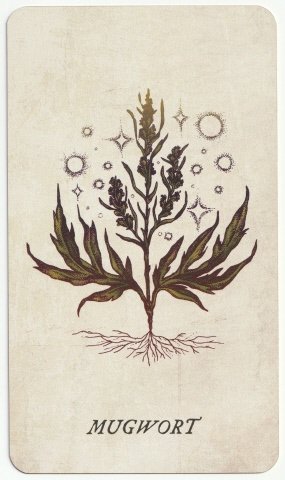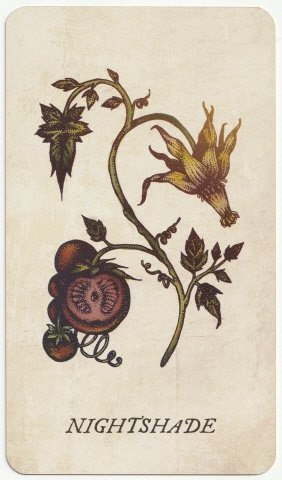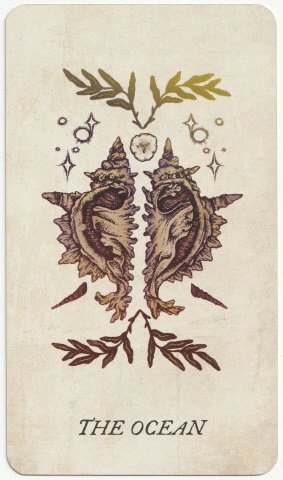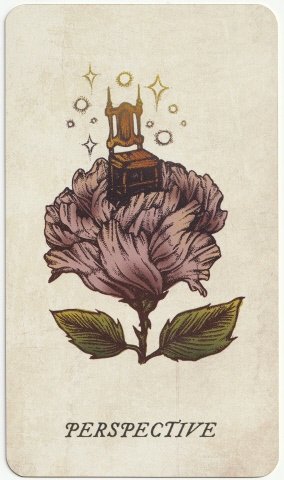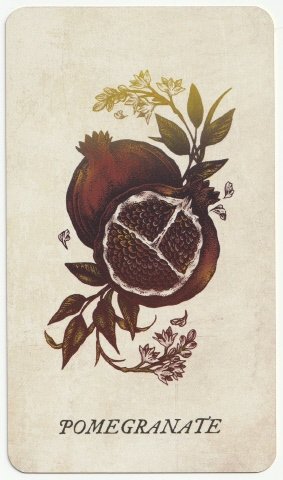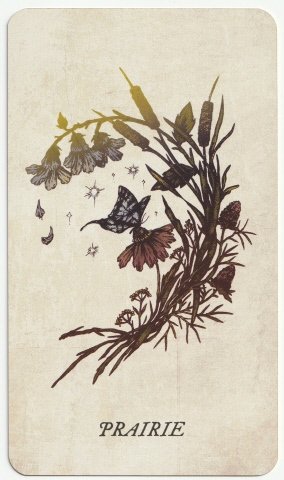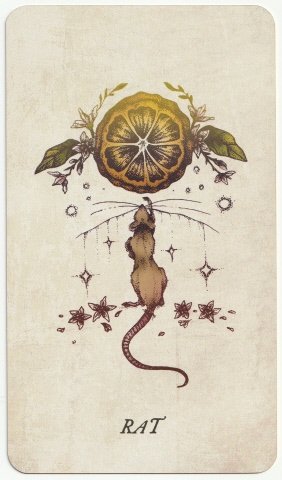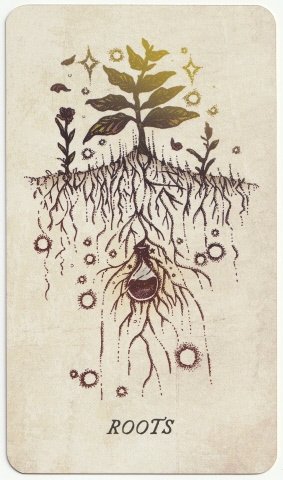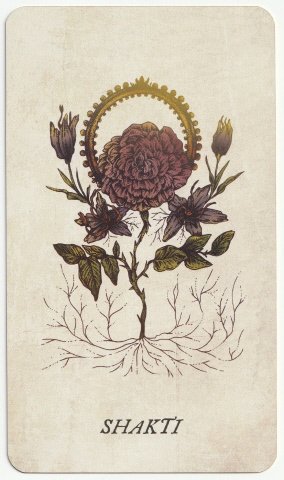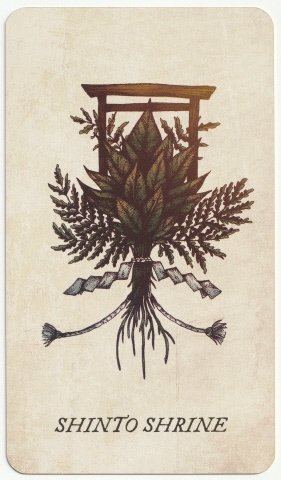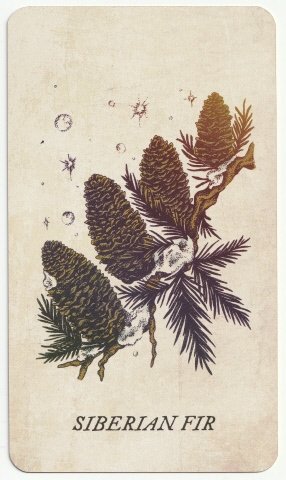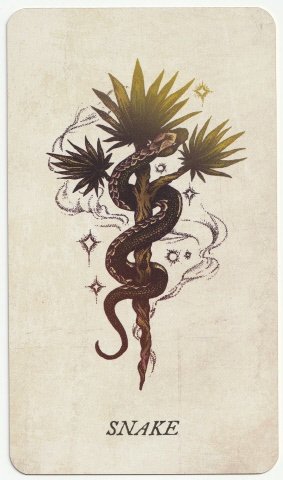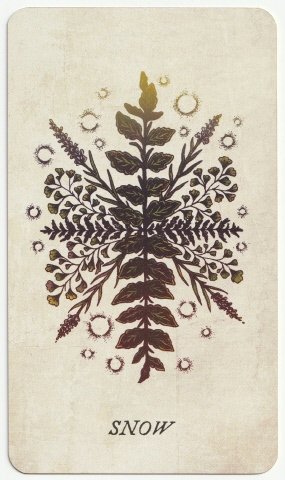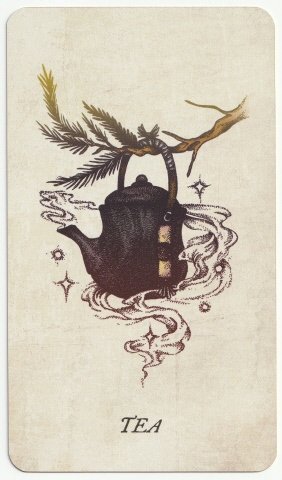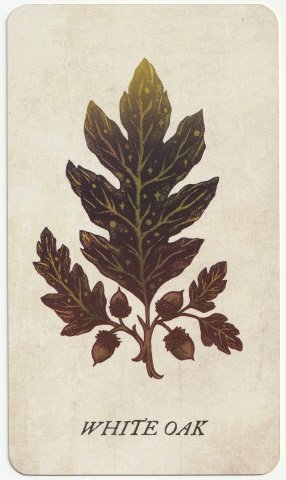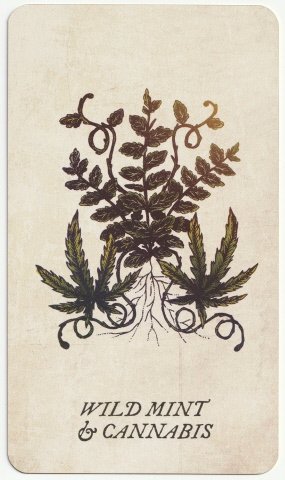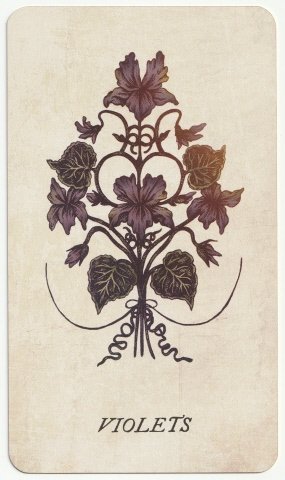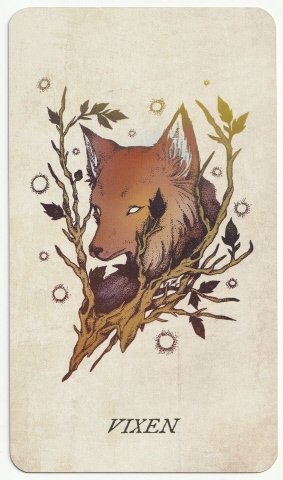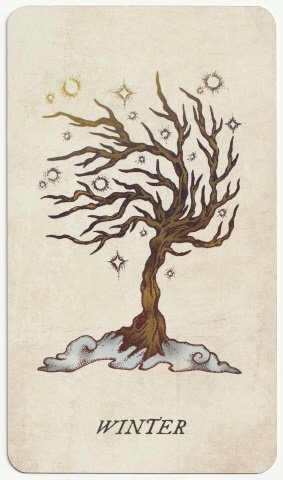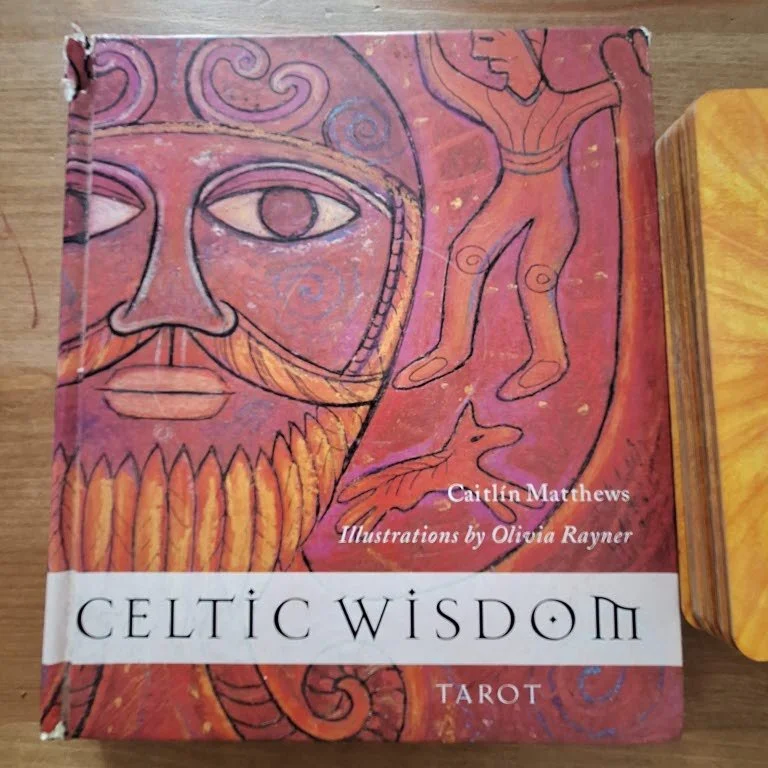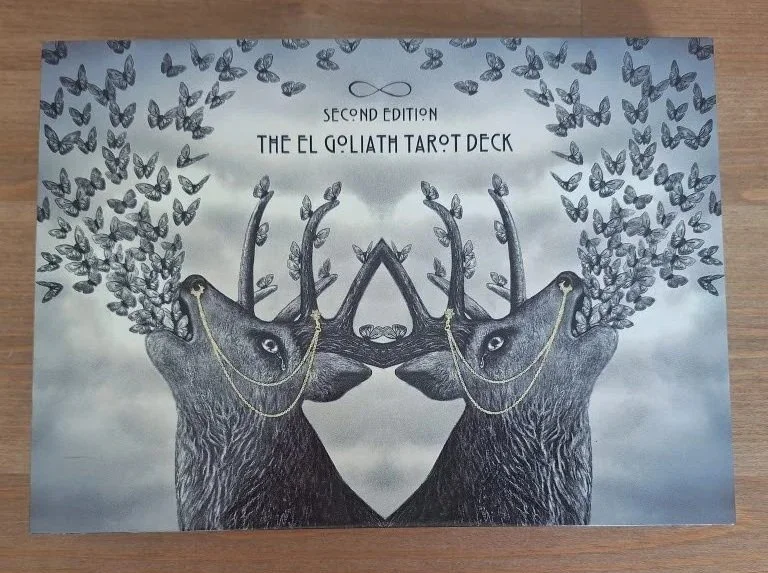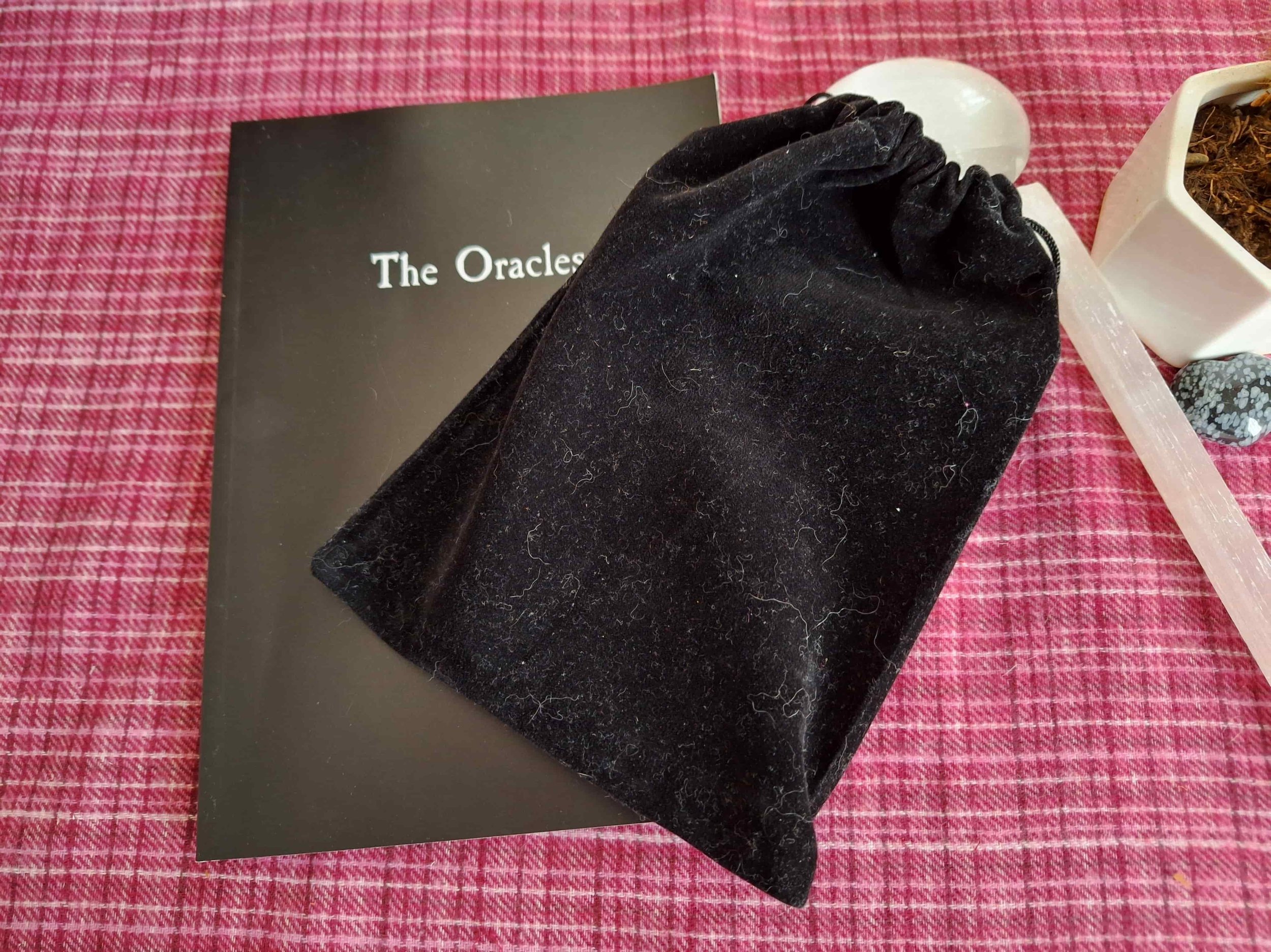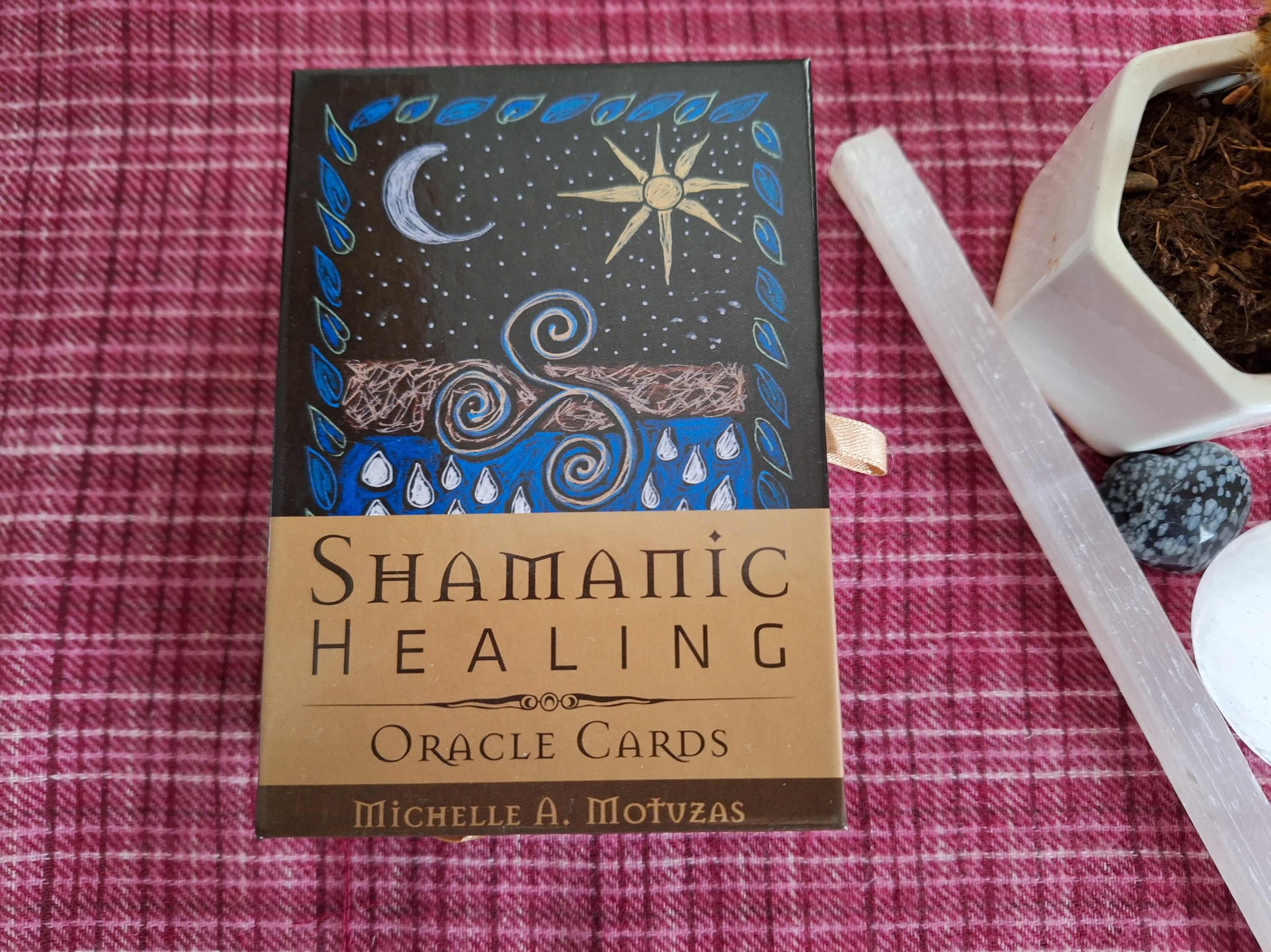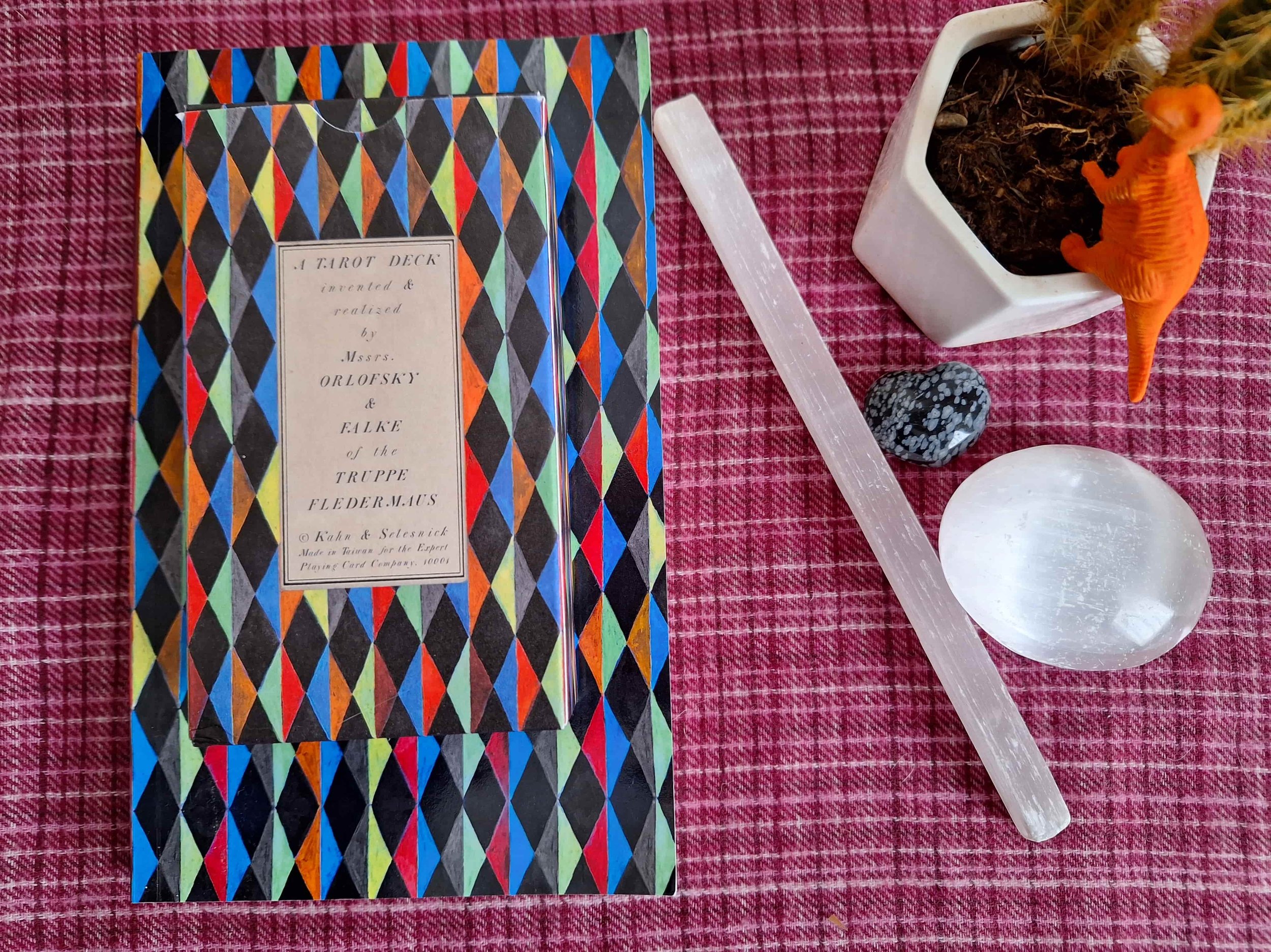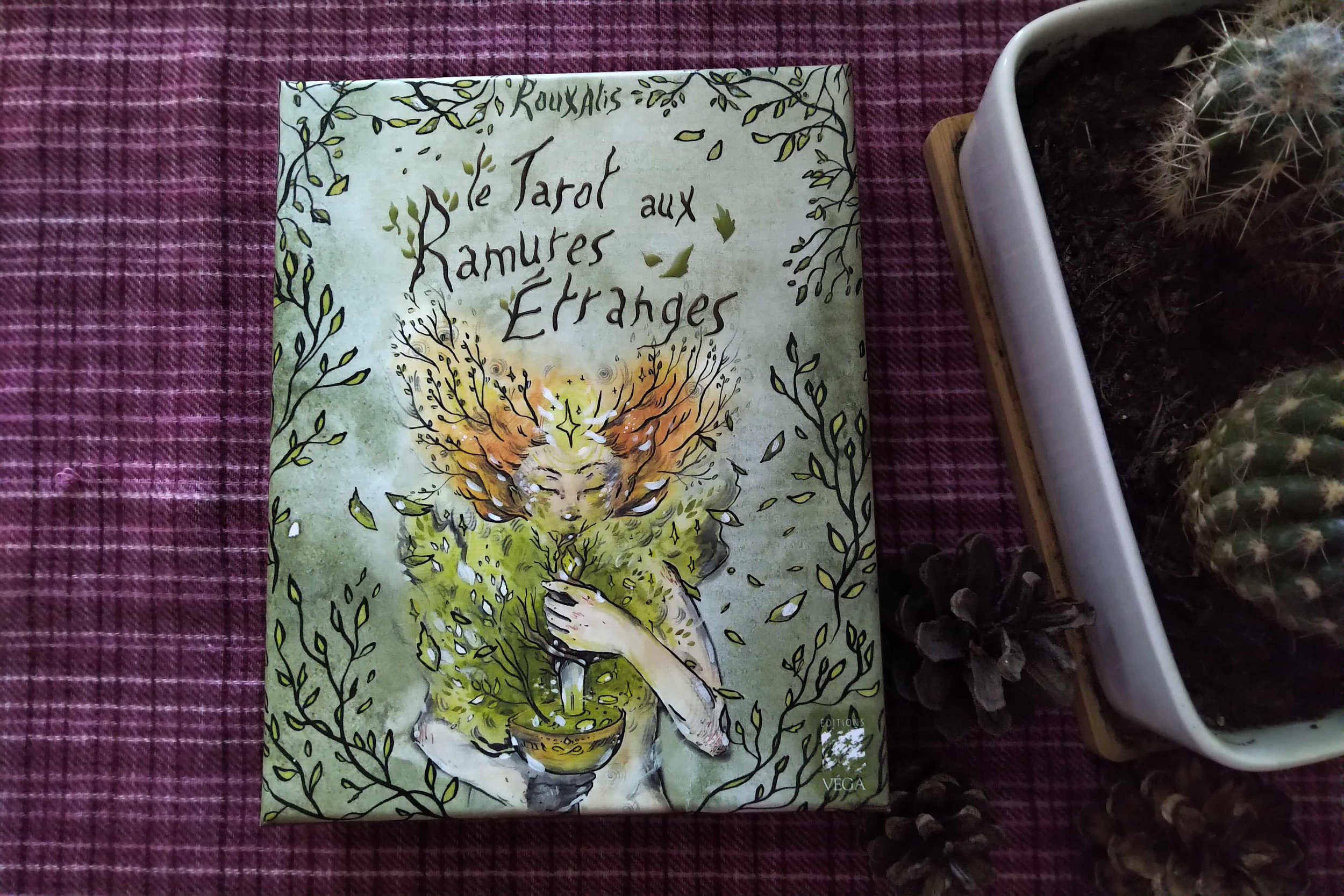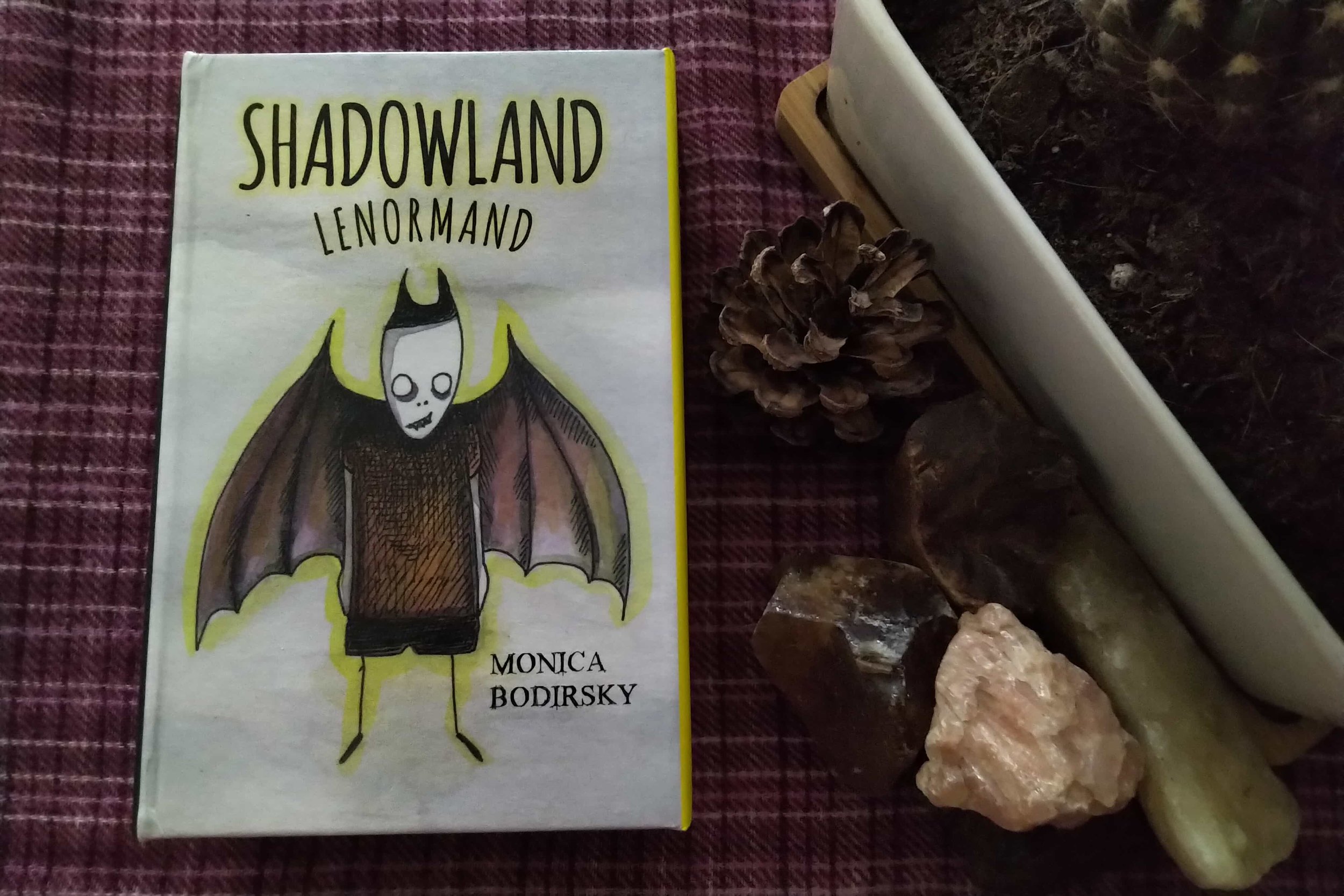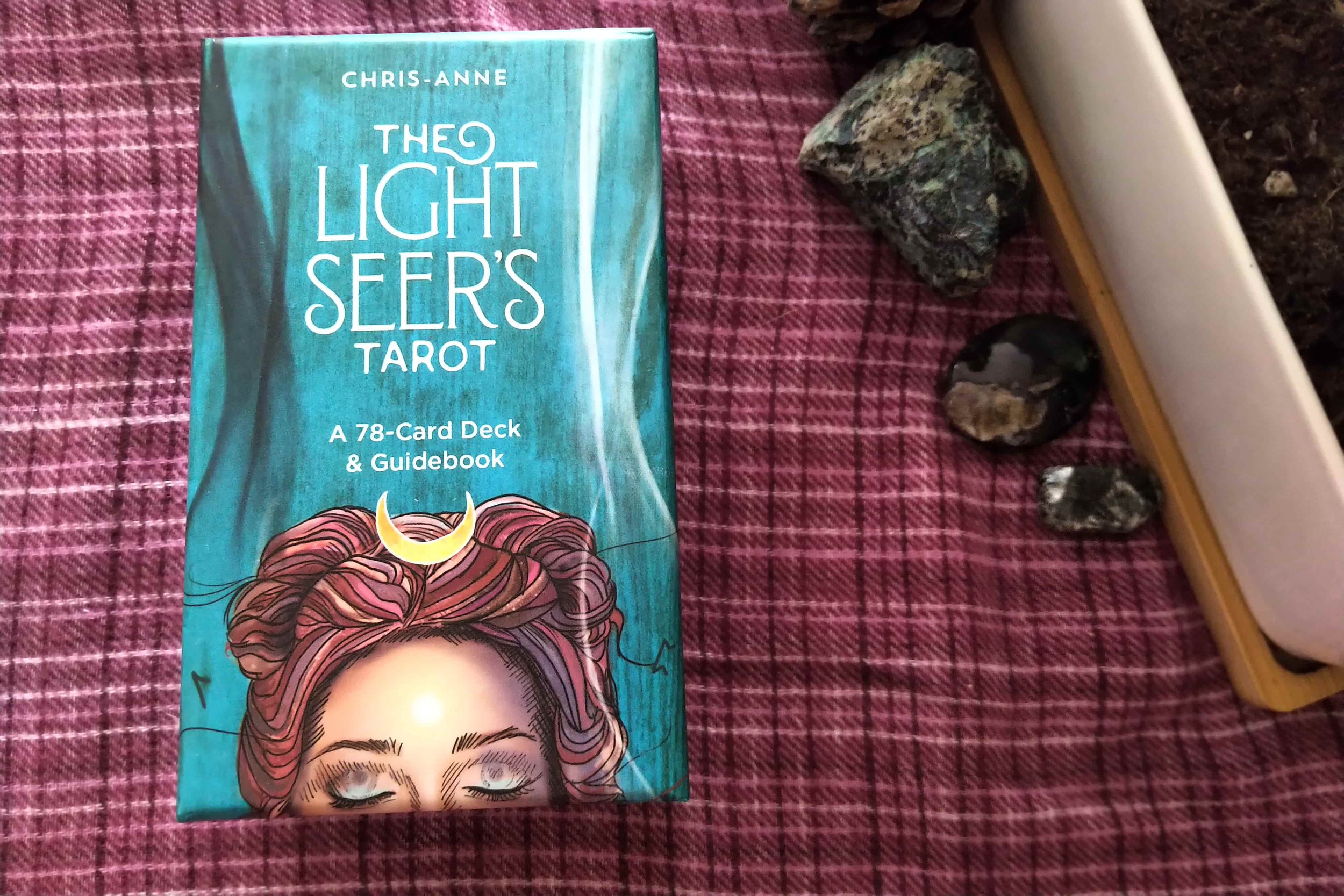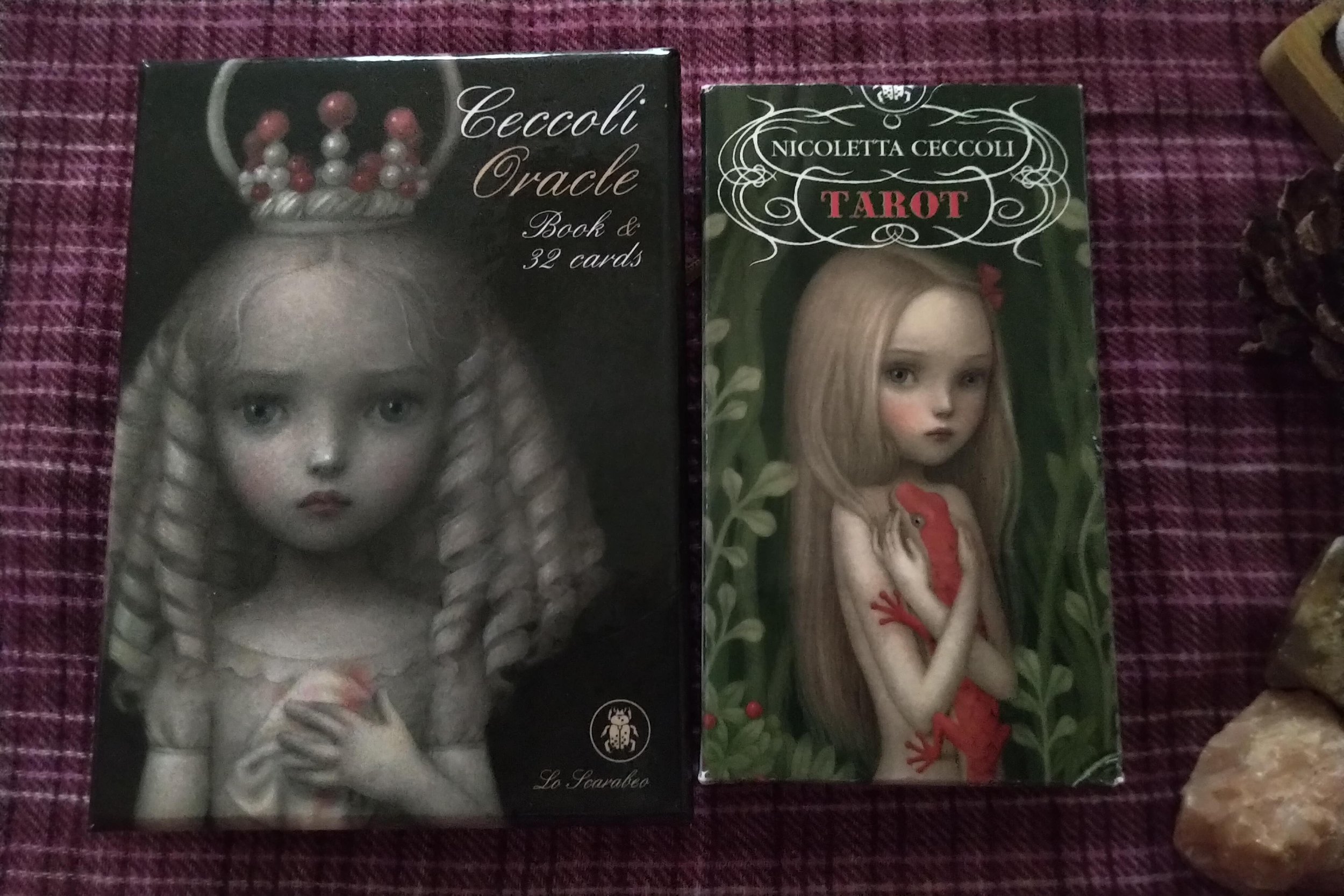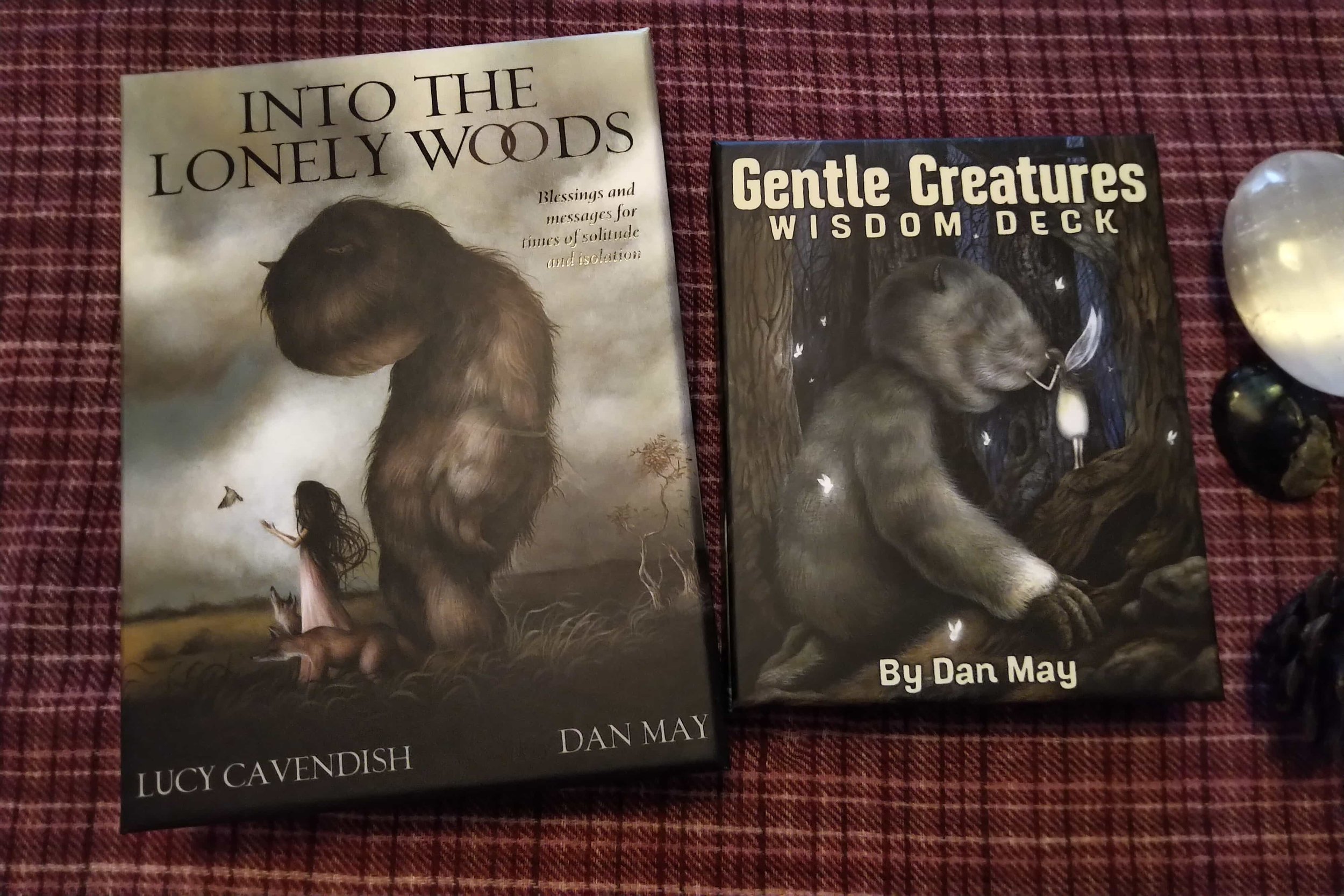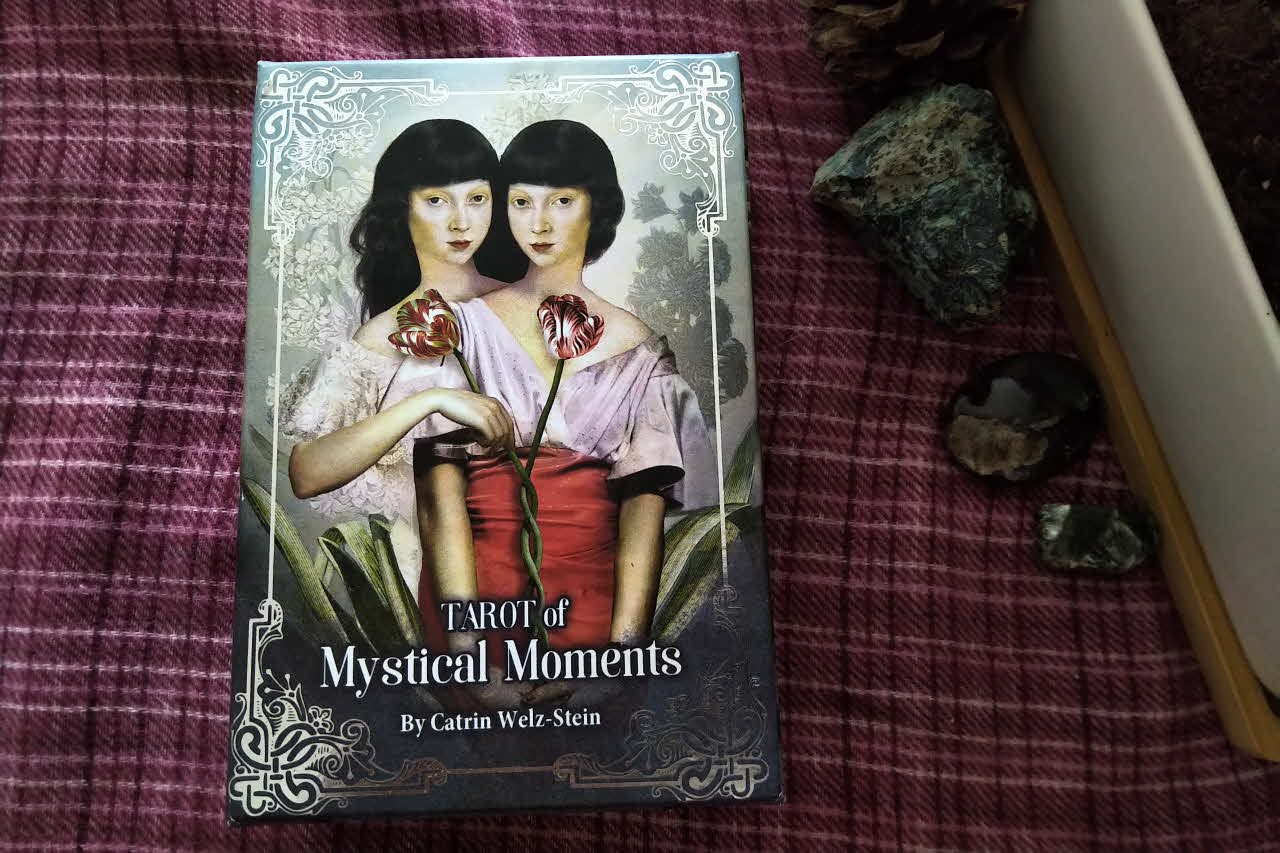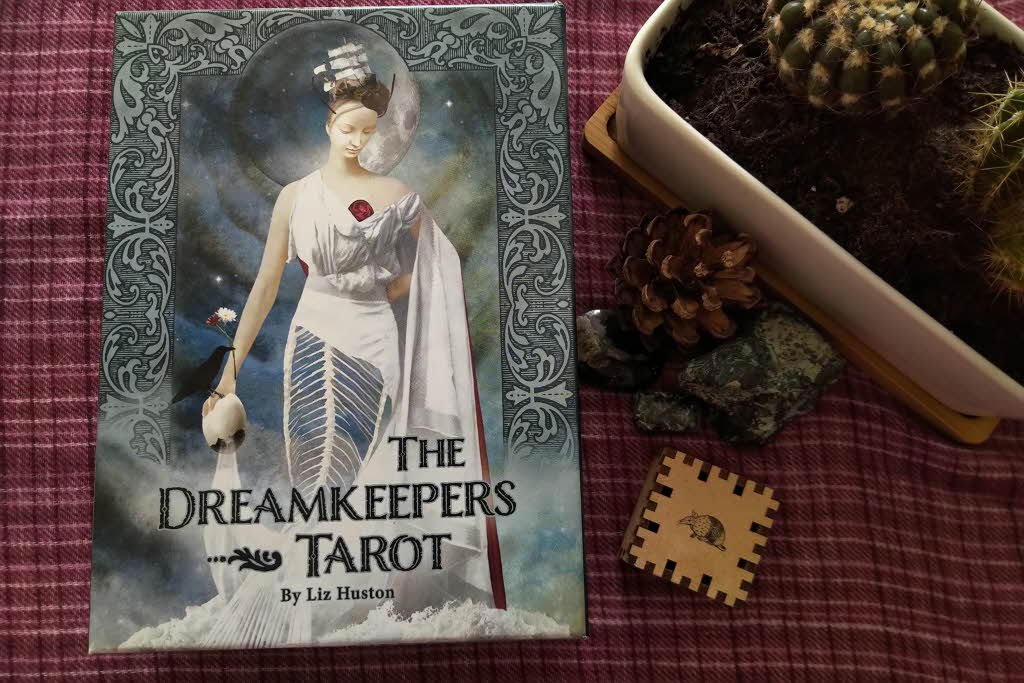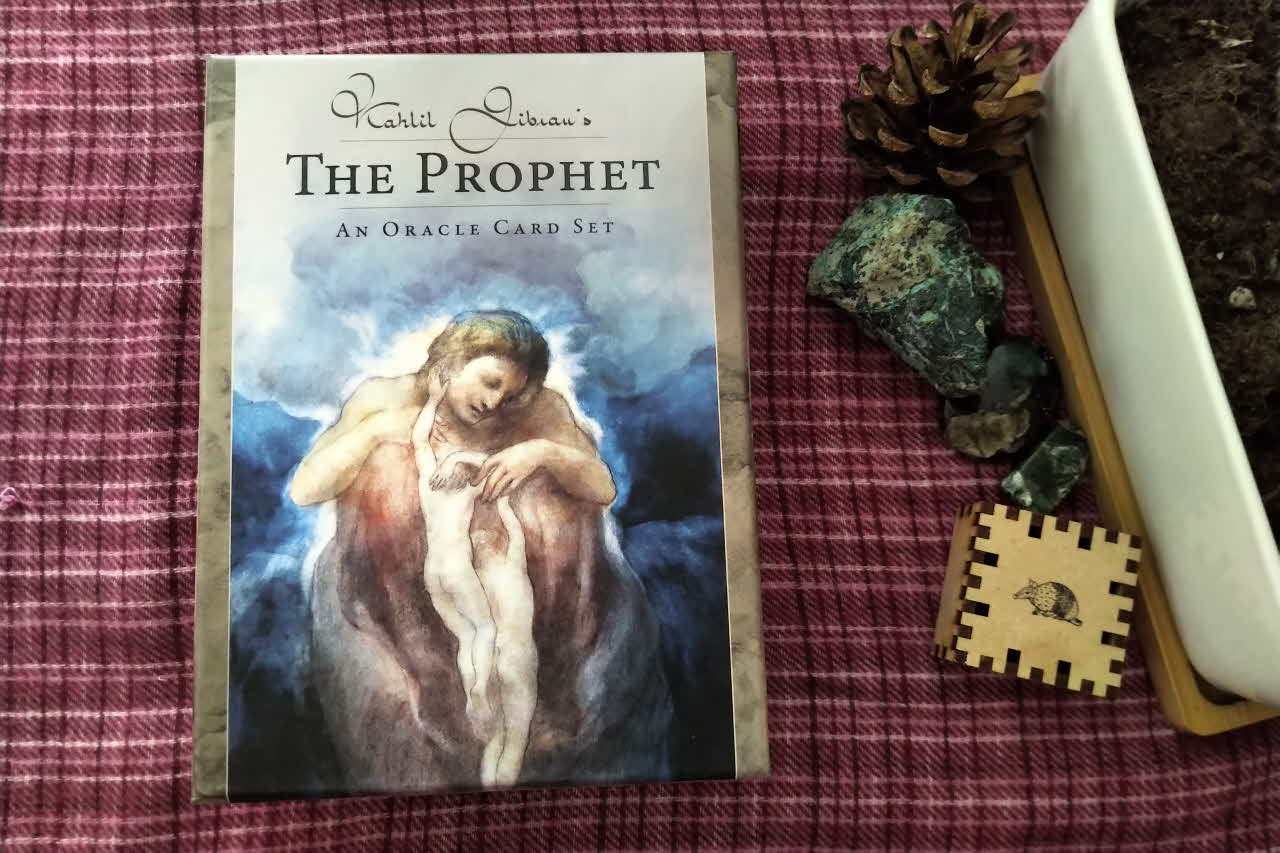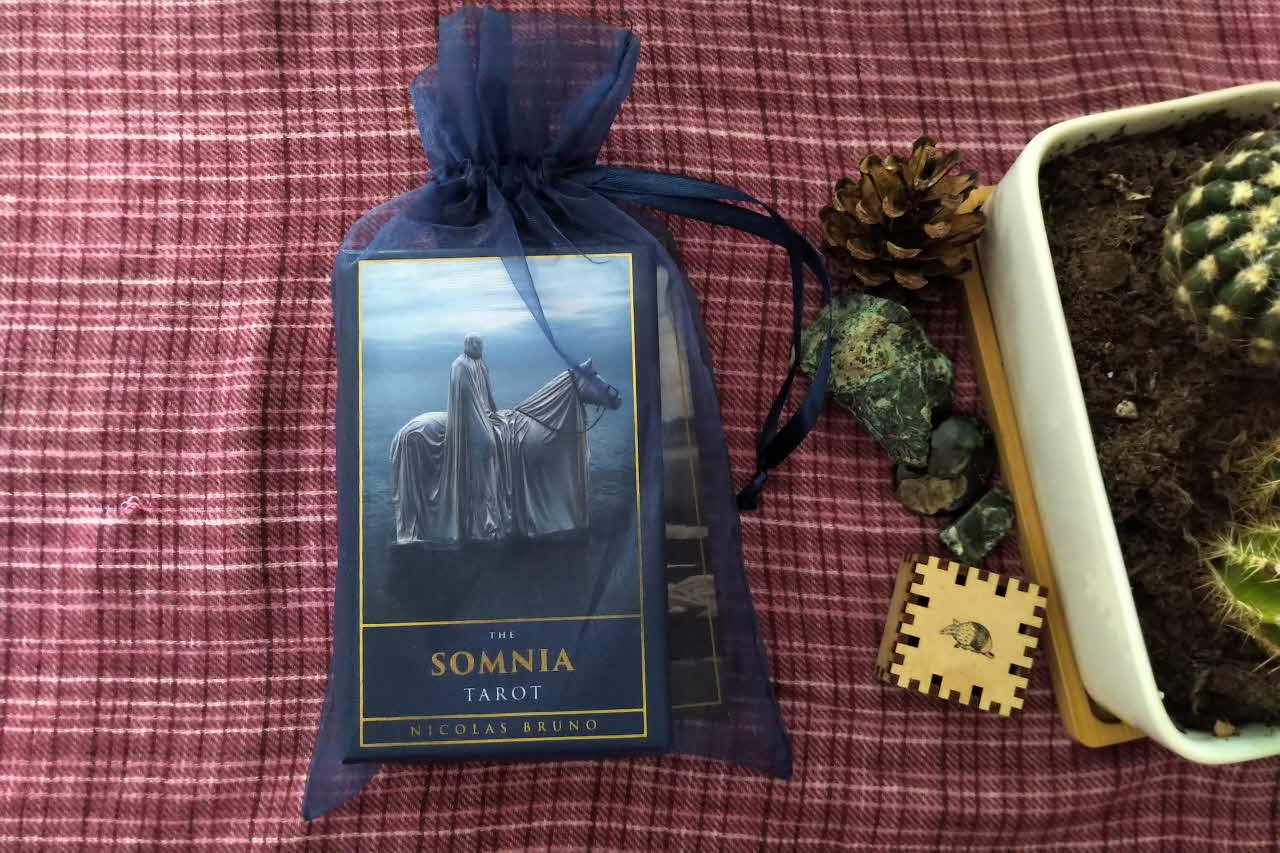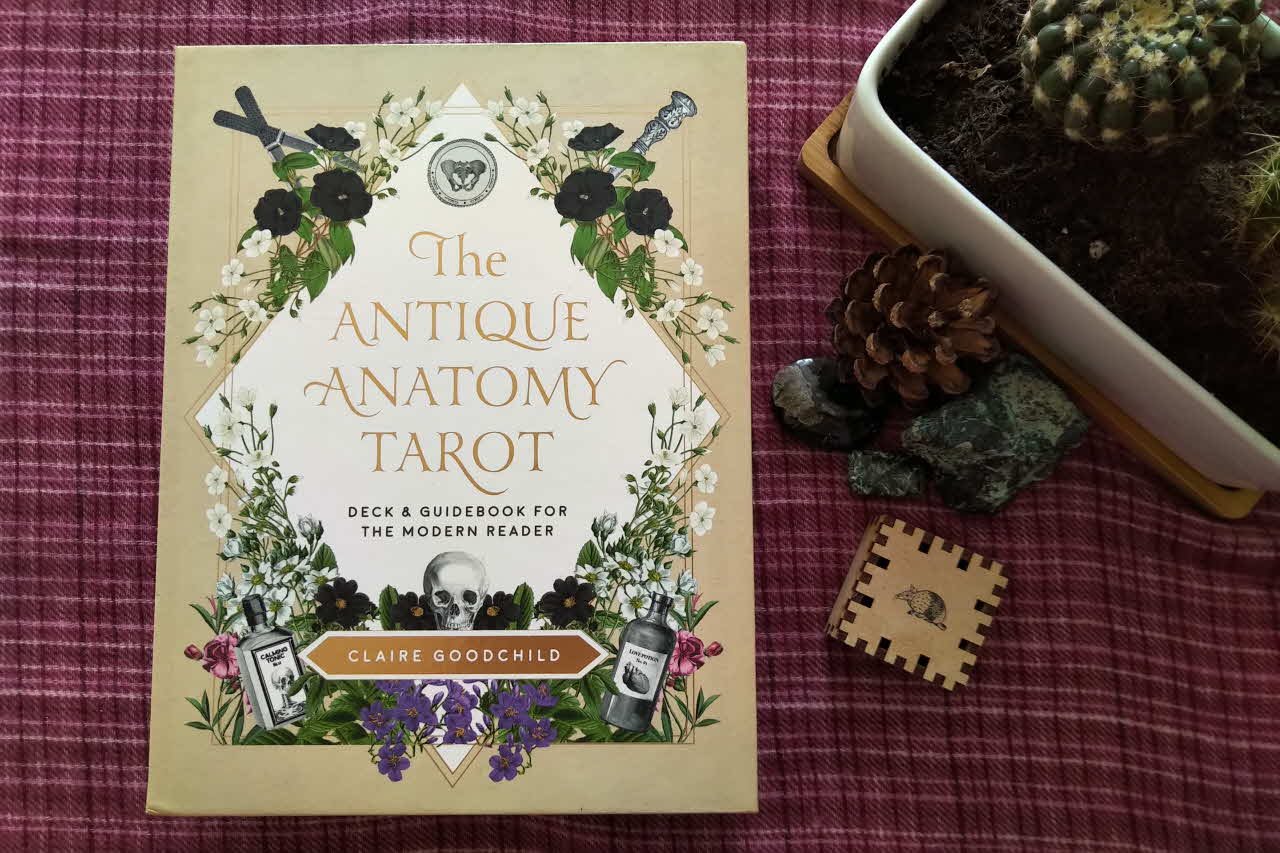The Botanical Oracle for Strange Women
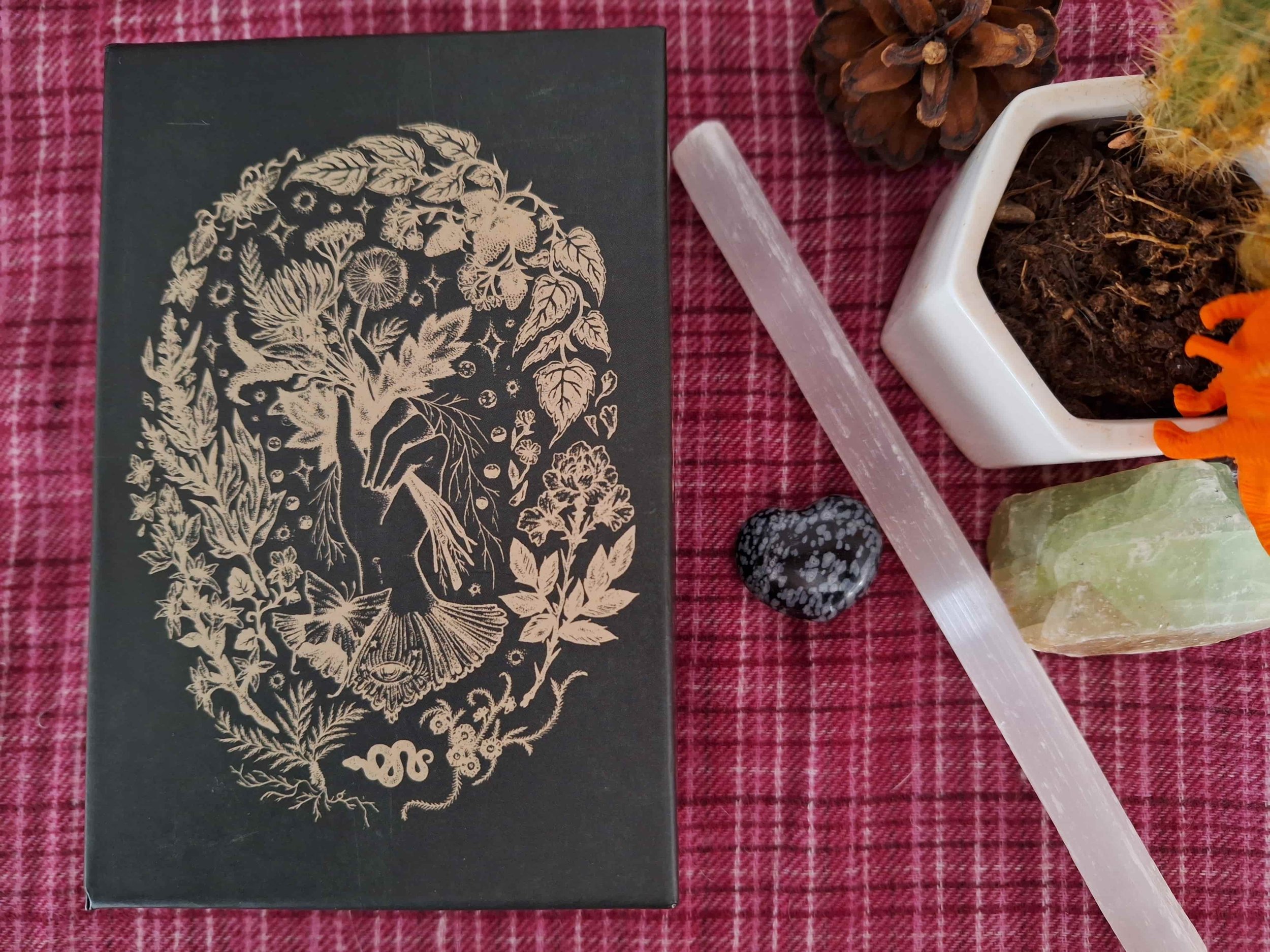
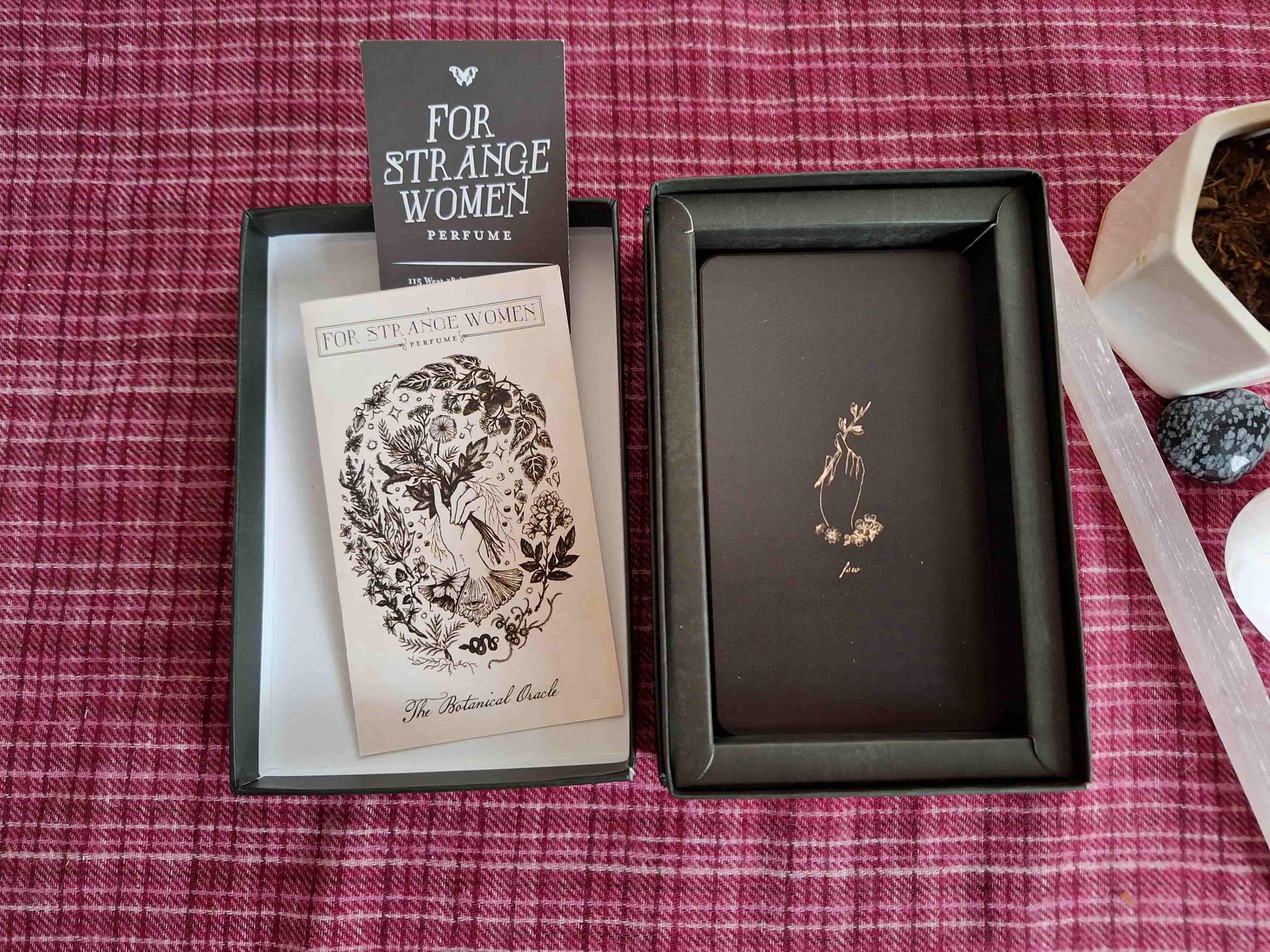
For Strange Women published the Botanical Oracle deck in 2019. The artwork was originally commissioned over a period spanning fifty-three new moons to illustrate their lunar perfume series. Ash Miyagawa is the artist responsible for the imagery in the beautiful Botanical Oracle and it's currently on my list of personal favourites. It comes in a small but sturdy box with a lift-off lid, and there is a small leaflet with brief meanings for each of the cards. The cards are relatively thin without being flimsy. The card surface is only marginally glossy, and to finish things off we have gold edging! The deck is a nice manageable size, and the cards shuffle easily without sticking or clumping. It’s an expensive deck, though, and works out at around £75 if you’re in the UK.
Before I begin, I will say that scanning the cards hasn't picked up the brown undertones very well, and they're more on the sepia side than the pictures show. I love the chosen symbols and the slightly ye olde-worlde design. Many of the symbols are already familiar to me, but a handful of the plant-based ones I haven’t used on a divinatory level. The leaflet is a nice touch but offers very little information on how to interpret the cards. If I use my critical eye, I’ll say the leaflet is shockingly bad on the whole and is better discarded altogether. I understand that space is an issue, but there is room in the box for a better guidebook. The For Strange Women website says “Booklet includes concise card interpretations and suggested spreads but we encourage you also to find your own interpretations and reading style based on your intuitive guidance.” And this is exactly what I’m going to do. I’m not going to cover each interpretation I think needs ignoring because there are simply too many. I'd rather look at a couple of the cards I love and talk more in-depth about the meaning that could be gleaned from the card. There are cards that I really like, such as tea, hypnosis, moth, morels and clock, to name but a few. And others I’m intrigued by — curio cabinet, ceremony, and the wild mint and cannabis card. The cards Baba Yaga and Labyrinth both flipped out in a reading I did for someone quite recently. They’re pretty meaty symbols and I already know there is too much ground to cover. Others may be given a mention as needed. Please bear in mind that entire books have been written on Baba Yaga and Labyrinths — reducing either of them to a few paragraphs is still going to be nowhere near adequate.
I love that Baba Yaga is included in the deck because I find the archetype fascinating. The card shows her little house, surrounded by stars and the moon. Soil and roots stick to the bottom of the house, and a chicken foot-shaped root takes centre stage underneath. The image reflects a very traditional description of her house. The leaflet interpretation says, “Betrayal, lies, manipulation, a trap. May also refer to an older woman whom you don’t trust.” As someone with an avid interest in the psych-analysis of myth and all things folklore, I’m gutted to see Baba Yaga reduced to her superficial stereotype of an evil witch. Clarissa Pinkola Estes has often bemoaned how the wild woman archetype is reduced to a hag. In Slavic folklore, Baba Yaga dispenses both curses and useful advice, she's a shapeshifter. Yes, she is to be feared, but only if you’re bad. A key aspect of Baba Yaga is that she sees each soul who wanders across her path as an individual. There is no broad sweeping generalisation that lead her to either help or harm. She decides her course of action based on the character of the person before her. Baba Yaga has an eternal fire — symbolically, this can represent new life, regeneration, and eternity. The eternal flame can also be seen as the inner divine consciousness or the creative life force. Baba Yaga is seen by some as one who acts as a mediator between the realms. Others see her as a wild woman archetype. The Cauldron is another witchy card that I like. But, again, the leaflet advice is poor, “Good news is brewing. Positivity and good intentions. If next to the Baba Yaga card, it may be an unpleasant surprise.” Baba Yaga does indeed have a cauldron, but she doesn’t always eat children. Clairvoyant shows the classic palmistry hand with an eye on the wrist. “The subject is of a karmic or predestined nature. If referring to a person, it is a wise older woman.” It would’ve been nice to see a suggestion that if it’s next to the Baba Yaga card it means help from a powerful woman. Or maybe the suggestion of intense visions or strong intuition. Baba Yaga is a complex character, and I don't have the space or time to say everything I could. To reiterate, I think it’s a great card to have in an oracle deck.
Labyrinth is a relatively straightforward design of a 2D labyrinth with three candles sitting on the top. Foliage and flowers surround the labyrinth. The leaflet says, “Moving through something either physically or in your mind. Travel, new ideas, transport. Seeing a new place or perspective.” This is just too generic and doesn’t drive the point home that the journey is either compulsory or necessary to complete a task of some description. Neither does it include any reference to achieving a sense of balance — a dominant aspect of the completion of a labyrinth path. The labyrinth's history is rich — 4,000 years old, and this includes the Greek myth of Ariadne helping Theseus escape from the labyrinth that holds the Minotaur prisoner. That being said, the labyrinth in Greek myth is more akin to a maze. Like Baba Yaga, the myth involving the minotaur is complex. Just last night I was listening to Trauma and The Soul by the Jungian analyst Donald Kalsched, and he mentioned that James Grotstein considers “the labyrinth and the minotaur inside it signify the persecutory demons of our own creation. They are created to protect us from the real of which we have become orphans.” He goes on to say that there is a necessity to push forward with courage. I don’t want to get too bogged down with the Jungian and Kleinian stuff because I have a separate blog post planned on the myth of the minotaur. Using labyrinths as a form of active meditation is an established therapeutic technique to calm the mind. It's said they act as a way to help restore balance and release a person from behaviours and patterns that are unhelpful to moving forward. A condensed view of Labyrinth could focus on strategy and intelligence, complex problem solving, the escape from a difficult situation, fighting one’s inner demons to find a path to freedom. Achieving a sense of balance, or a need to work on calming the mind.
My youngest son bought this deck for me as a present for my birthday last year. I gave him a list of options, and he chose this one because he thought the artwork was cool. I can see how it's not too far from his own aesthetic, and wasn’t surprised by his choice. I am mightily glad to have received this one as a gift because it means I can enjoy it for what it is. Had I paid £75 for it, I'd be forever screwing over the price. I will mention that if you want to purchase the deck, it’s marginally cheaper to buy directly from their website rather than their Etsy store. I’m happy to have and use the Botanical Oracle, but I do think it’s massively overpriced for what it is. It’s a £30 deck. It’s a nice deck, but it’s a £30 deck - not a £75 including postage deck. If it had a decent guidebook, it would’ve pushed the price up considerably. But, the guidebook is a mere leaflet and a pretty shite one at that. I will say that For Strange Women are primarily known for their creation of expensive perfumes, and the price is in line with what their customer base would pay.
Some of the symbols work for me, and it’s a deck I can put to good use. That being said, I have issues with the finished product because it feels incomplete — or badly put together, whichever you prefer. The images weren’t initially chosen to be part of an oracle and were assembled as an oracle after the event. I think this could be part of the problem. I can see how some of the symbols are linked, but others seem more random. This isn’t a problem if you just want a deck that gives you one or two spontaneous symbols to enhance a reading. I do need to spend some time with the symbols I’m less familiar with, and I’m sure that will help to connect more deeply with it in its entirety. I also wonder if I should keep it for new moon readings. I do feel a strong need to assign a purpose to this deck because I think it’ll help to get the best out of it. Maybe it’s one to use when things aren’t feeling all that cohesive — a reflection of the deck’s origins. Or could it be one to use for those who appreciate smells and aromas — another of its origins? It could be a deck better suited to witches and others who live a life in tune with natural cycles. . . and yes, strange women. It’s a good deck for strange women.
Reference:
Kalsched, D. (2013) Trauma and The Soul, Chapter 6: Psychoanalytic Approaches to the Inner World
Latest Posts
Archives
Categories
- Animal-centred
- Books
- Decks For Self-development
- Difficult Decks
- Expensive Decks
- Lenormand Decks
- Oracle Cards
- Oracle Cards For Beginners
- Out-of-print
- Personal Favourites
- Published 2000s
- Published 2010s
- Published 2020s
- Tarot
- Tarot & Oracle Sets
- Tarot Cards For Beginners
- Under £15
- Under £20
- Under £30
- Under £40
- Witchy Decks
- Woman-centred
